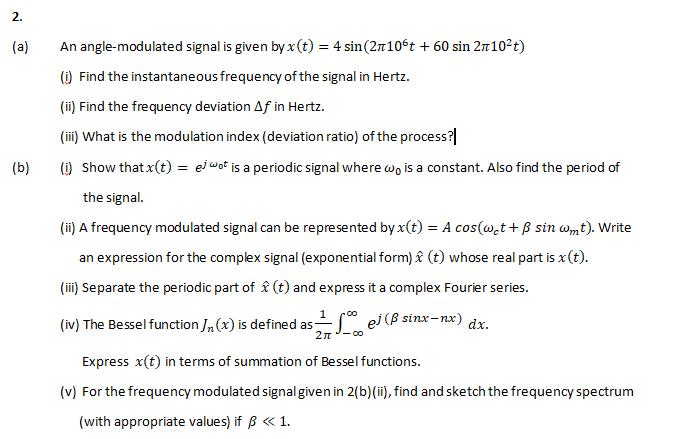Answered step by step
Verified Expert Solution
Question
1 Approved Answer
2. (a). (b) An angle-modulated signal is given by x(t) = 4 sin (2106t + 60 sin 210+) (i) Find the instantaneous frequency of

2. (a). (b) An angle-modulated signal is given by x(t) = 4 sin (2106t + 60 sin 210+) (i) Find the instantaneous frequency of the signal in Hertz. (ii) Find the frequency deviation Af in Hertz. (iii) What is the modulation index (deviation ratio) of the process? (i) Show that x(t) = ej wot is a periodic signal where wo is a constant. Also find the period of the signal. (ii) A frequency modulated signal can be represented by x(t) = A cos(wet + sin wmt). Write an expression for the complex signal (exponential form) (t) whose real part is x(t). (iii) Separate the periodic part of (t) and express it a complex Fourier series. 1 (iv) The Bessel function /(x) is defined as ej (B sinx-nx) dx. 2-co Express x(t) in terms of summation of Bessel functions. (v) For the frequency modulated signal given in 2(b)(ii), find and sketch the frequency spectrum (with appropriate values) if < 1.
Step by Step Solution
There are 3 Steps involved in it
Step: 1
i The instantaneous frequency of the signal is given by the derivative of the phase with respect to ...
Get Instant Access to Expert-Tailored Solutions
See step-by-step solutions with expert insights and AI powered tools for academic success
Step: 2

Step: 3

Ace Your Homework with AI
Get the answers you need in no time with our AI-driven, step-by-step assistance
Get Started


